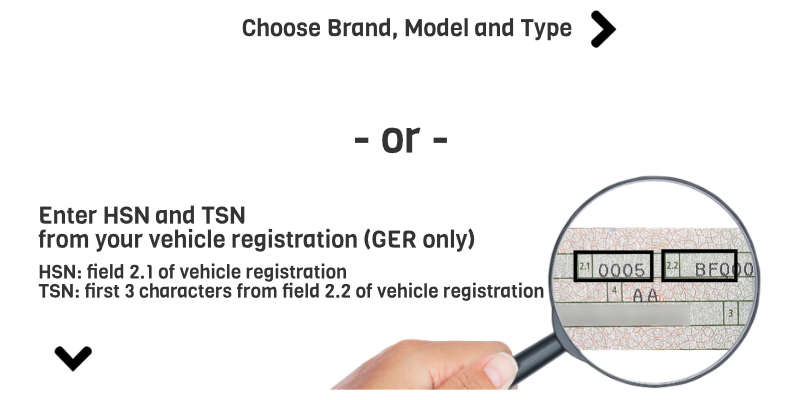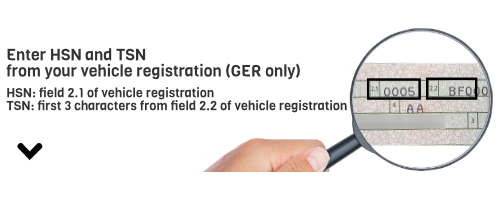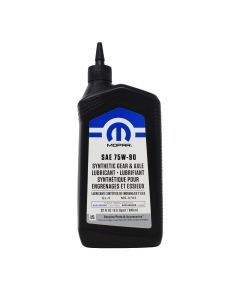10W-40, 75W-90 | Differential & Transfer Case Fluid
Differential gearbox – perfection lies in balance
Differential gears are most commonly used as axle differentials in automobiles. They ensure for example the different speed of wheels and their balanced performance in different speed situations. Differential transmissions are used for rear-wheel drive or 4-wheel vehicles. It is lubricated by approx. 1-1.5 liters of differential gear oil. With regard to the change, a "Lifetime" property of the oil is often attested. Accordingly, the differential gear oil would be usable over the entire service life of the vehicle. However, you should not blindly trust this identifier. The automotive manufacturers usually refer to the handbooks themselves that a change after 80.000 or 120.000 kilometers is necessary, despite Lifetime property. The "Lifetime" thus quickly turns out to be a marketing tool. If the differential gear oil has already turned black when changing, the oil change proves to be long overdue.
Distributor oil for the driving force balance
The transfer case ensures the equal distribution of the drive force on several axes. This ensures that all four wheels are operated simultaneously. Automotive manufacturers such as VW and BMW have special spare parts numbers for the suitable distributor oil. As in the case of differential gear oil, a smaller liter quantity is required for the transfer case oil.
Buy 10W-40 Oil: Huge selection, top prices
In the ATO24 online store you get exactly the right 10W-40 engine oil for your vehicle! In addition to top prices, we offer you reliable advice and help you find the right 10W-40 oil.
The viscosity SAE 10W-40 belongs next to 5W-30 to the most demanded engine oil viscosity. But what exactly does 10W-40 actually mean and why are there so many different oils despite the same viscosity? We will clarify these and other questions in the course of this blog article.
What does 10W-40 mean?
10W40 stands for a multigrade viscosity. Correctly written out as 10W-40, the two viscosity indexes given, 10W and 40, refer to all-season use (suitability for winter and summer use). These multigrade oils were developed over 50 years ago and were intended to replace the procedure of having to change oil at summer and winter time. The viscosity specification in cold (10W) and warm (40) viscosity indicates the oil's flowability at high and low temperatures.
10W stands for the flowability in winter (this is where the W index comes from). The value 10 is not a directly measurable value of a certain unit but an index number. The lower the number before the W, the better the flowability at cold temperatures and cold starts. A 5W-30 engine oil therefore has better flow properties in cold conditions than a 10W-40 engine oil.
The number 40 stands for the flowability of the oil at a temperature of 100 degrees Celsius. Again, the lower the number, the lower the viscosity at a temperature of 100 degrees. Accordingly, a 10w40 engine oil is more viscous than a 0W-30 engine oil.
Buy 10W-40: Here's what to keep in mind!
Even if the vehicle manual recommends a 10w-40 engine oil, the right 10W40 oil is not immediately found. When buying a 10W-40, attention must be paid to the prescribed specification and release. They represent the particular chemical properties of an oil.
10W-40 engine oil approvals
As always, your vehicle may require a release in addition to the 10W-40 viscosity. These approvals are listed on the bottle label next to the specifications. The best known approvals are those of BMW (e.g. LL-04), VW (e.g. VW 507 00) and Mercedes Benz (e.g. MB 251.0). The approvals with the engine oil are comparable with a quality seal of the automobile manufacturers. Thus this manufacturer issues a certain chemical characteristic of oils, which must be fulfilled, in order to be permissible for the cars from the own product series.
What engine oil approvals occur together with viscosity SAE 10W-40? Among many others, are common engine oils of the following releases and recommendations 10W-40 engine oils:
- BMW Special Oil 10W-40 Engine Oil
- Mercedes-Benz MB 229.1 10W-40 Engine Oil
- VW 505 00 10W-40 Engine Oil
What is the difference between 10W-30 and 10W-40?
Both viscosities share the winter property "10W", which means that they have the same properties at low temperatures and cold start. The indices 30 and 40 refer to a difference at high temperatures. Thus, the 10W-40 shows a slightly higher viscosity at high operating temperatures. This difference can be advantageous if the engine has oil losses with a 10W-30 motor oil.











